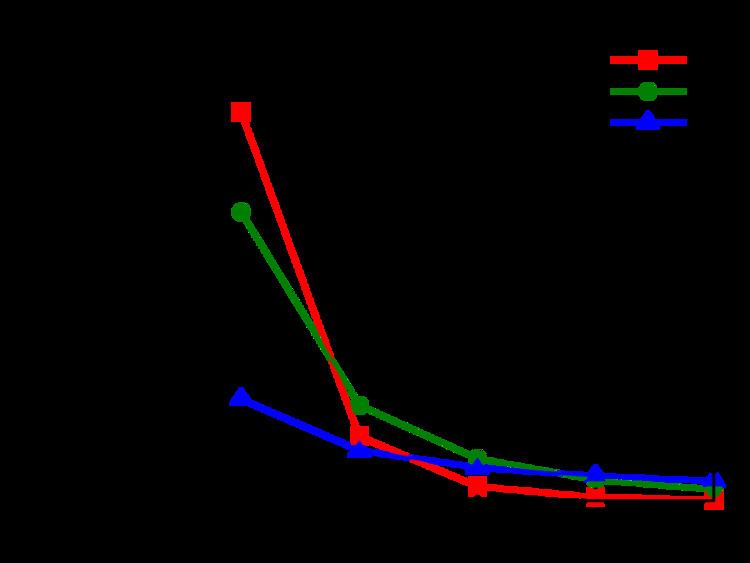 | ||
Parameters 0 < p < 1 {\displaystyle 0 Support k ∈ { 1 , 2 , 3 , … } {\displaystyle k\in \{1,2,3,\dots \}\!} pmf − 1 ln ( 1 − p ) p k k {\displaystyle {\frac {-1}{\ln(1-p)}}\;{\frac {\;p^{k}}{k}}\!} CDF 1 + B ( p ; k + 1 , 0 ) ln ( 1 − p ) {\displaystyle 1+{\frac {\mathrm {B} (p;k+1,0)}{\ln(1-p)}}\!} Mean − 1 ln ( 1 − p ) p 1 − p {\displaystyle {\frac {-1}{\ln(1-p)}}\;{\frac {p}{1-p}}\!} Mode 1 {\displaystyle 1} | ||
In probability and statistics, the logarithmic distribution (also known as the logarithmic series distribution or the log-series distribution) is a discrete probability distribution derived from the Maclaurin series expansion
From this we obtain the identity
This leads directly to the probability mass function of a Log(p)-distributed random variable:
for k ≥ 1, and where 0 < p < 1. Because of the identity above, the distribution is properly normalized.
The cumulative distribution function is
where B is the incomplete beta function.
A Poisson compounded with Log(p)-distributed random variables has a negative binomial distribution. In other words, if N is a random variable with a Poisson distribution, and Xi, i = 1, 2, 3, ... is an infinite sequence of independent identically distributed random variables each having a Log(p) distribution, then
has a negative binomial distribution. In this way, the negative binomial distribution is seen to be a compound Poisson distribution.
R. A. Fisher described the logarithmic distribution in a paper that used it to model relative species abundance.
The probability mass function ƒ of this distribution satisfies the recurrence relation
